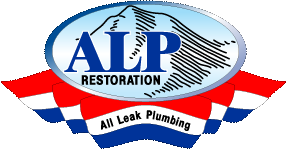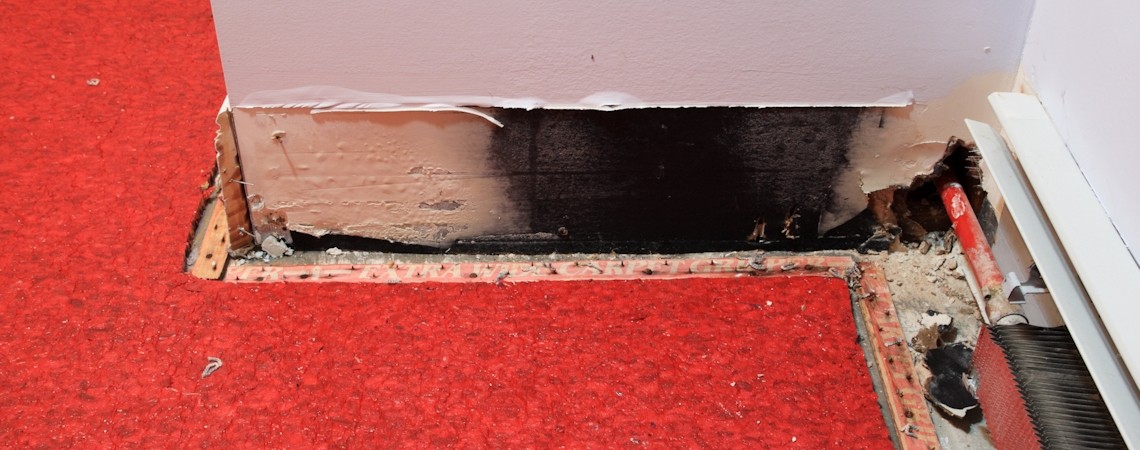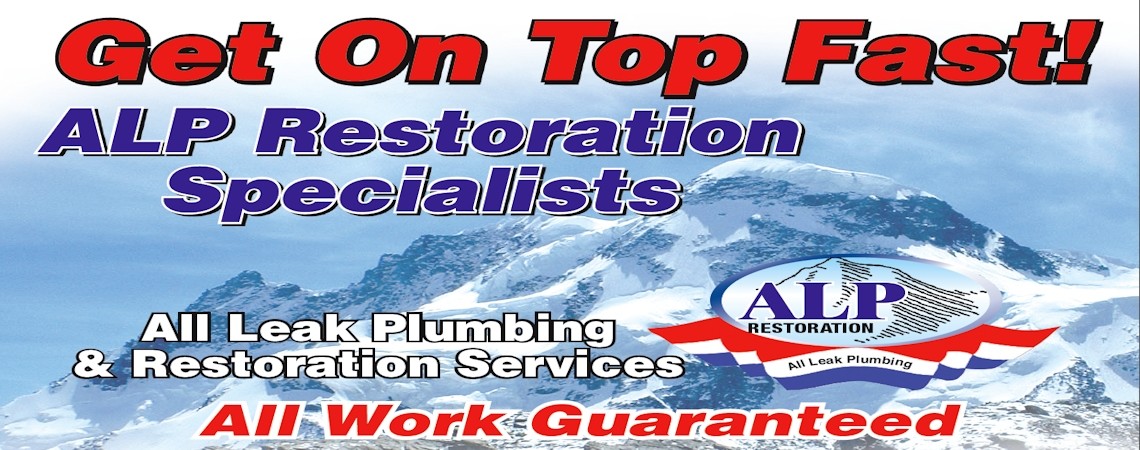
FAQ
Thank you for visiting our website ALP understands that experiencing water damage can be difficult, but rest assured you are looking at the right people to do the job. Below are a few of the most Frequently Asked Questions. This is most likely your first water loss. However: for ALP, this is a process we have done millions of times. Years of experience in returning homes and offices back to normal and helping families and individuals just like you make us the best choice for emergency services. The following is a checklist of things that may need to be done to restore and protect your property and a brief description of why.
ALP is a highly reputable, licensed, insured and endorsed water damage service provider. In addition to our years of experience, our qualified technicians have completed advanced training in water mitigation, dehumidification systems, mold remediation and corrosion control. They also seek continuing education to learn about new techniques and equipment to better serve you in your time of need.
This information is general in nature and may not apply to your specific needs. However, we hope it will help answer your questions and aid you in understanding the processes and procedures in restoring your property.
EMERGENCY SERVICE
Upon arrival, a Statement of Authorization (contractual agreement) will need to be signed before work can begin. A ALP trained technician will begin by determining the status of your emergency. We will extract as much water as possible. High-velocity air movers and dehumidifiers will be set to dry the structure and sub-floor quickly. Equipment must be left on for the designated amount of time to ensure proper drying. The carpet may need to be treated to inhibit microbial growth. A decision will need to be made between you, your insurance adjuster and your ALP technician if the flooring, carpet and/or pad cannot be dried in place.
JOB SITE INSPECTIONS
It will be necessary for ALP to have access to your property during business hours throughout the drying process in order to properly monitor the temperature, humidity and our equipment. Please work with our office and/or our technician on your preferred method for re-entry to your property so we can properly monitor the drying process.
STRUCTURAL DRYING
How Long will it take my property to dry?
Drying time is determined by a combination of factors including the location, duration and source of water, the types of building materials, the weather conditions and how quickly emergency services begin. Through consistent monitoring and evaluation of the drying process, we can determine when the drying is complete. While there are no rules to determine how long your property will take to dry, ALP can tell you it may take between three to five days or more, depending on the conditions.
How do I know when my property is completely dry?
Proper testing with our specialized equipment is the correct way to determine if things are completely dry. Touch alone may be a false indicator. If you would like information on our General Electric Protimeter used for this determination, please ask your technician or call our office.
Will turning up the heat help dry things out?
Not necessarily. ALP will adjust the temperature to its optimum setting for the proper drying conditions. Please do not change the setting or shut off the system; doing so may prolong the drying process or cause damage to the equipment which will be billed to you.
My wood floors are wet and buckling. Will they have to be replaced?
Wood flooring must be evaluated during the drying process. ALP employs specialized drying systems and dehumidifiers which enable us to create an environment where wood floors can dry more efficiently and resume their original shape. Due to the density of hardwood flooring and urethane finishes, drying may take up to three weeks or longer. If you filed a claim, your insurance adjuster will work with you to make the final decision as regarding the floors need to be refinished or replaced.
STRUCTURAL REPAIRS or “Final Repairs”
If applicable, after the drying process is complete, structural damage is assessed and the repair phase can begin. At this time, drywall, ceilings and floors will be repaired.
My ceilings are wet. What needs to be done? ALP technicians will evaluate moisture content, determine the severity of the damage and may have to remove some of your ceiling for ventilation. Wet insulation can also be a hazard and may need to be removed.
Should I open the windows to help the drying process?
Opening your windows to assist the drying process is not always recommended. Outside weather conditions may vary, so the technician will determine when and if the outside air is appropriate.
Can I walk on the area during the drying process?
It is strongly suggested that you keep the traffic to a minimum. Wearing shoes is recommended for your safety.
CARPET AND FLOOR COVERINGS
Can my carpet be restored or will it have to be replaced?
Reasons your carpet may not be salvageable:
• Delamination: This occurs when the backing separates from the carpet fiber.
• Loss of adhesion: may be caused by prolonged exposure to water or age of the carpet
• Carpet covers wood flooring: it may be best to remove to salvage the wood flooring
• Sewage contamination or permanent stains
Why does my specialty floor need to be removed?
Non-porous flooring can trap water and prevent it from drying properly.
Do I need to move out of my property during this process?
If you file an insurance claim, you may receive guidance from your insurance adjuster/company. However, this is a decision you must reach on your own. Here are several things to consider. Safety is paramount. Our equipment is as childproof as possible, but we require your supervision for making sure no children play with it. Air movers and dehumidifiers will create some noise and make your property drafty for a few days. It is important that the equipment remains on, so if the noise is disruptive to you, you might want to consider an alternate place to stay.
What’s that smell?
It is not unusual to smell odors during the drying process. Increased heat and humidity can also lead to increased odors that may be coming from the drying building materials, or dormant spill and accident areas. Do not confuse these normal odors for the odor of mold. As the drying process continues and humidity levels drop, you’ll notice these odors disappearing on their own. Deodorizers are often used to minimize these effects as well.
Does everything need to be moved out during restoration?
Not usually. If items need to be moved out, we will let you know in advance.
Who is responsible for monitoring the drying equipment?
ALP water damage mitigation specialists will place and monitor equipment to achieve optimal results in the shortest amount of time. Please make sure no one turns the equipment off or moves it. Please notify our office immediately if the power goes off or if the equipment turns off. If the equipment is moved or turned off by you, YOU will be responsible for damages.
What about sewage contamination?
Hard surfaces can be cleaned and sanitized. Affected items that cannot be sanitized require disposal. Porous materials such as drywall, ceiling tiles, insulation, particle board, paneling, etc. that have been directly affected should be removed during the emergency service visit.
Who is responsible for paying for the service?
Ultimately you, the property owner, are responsible for payment. As the property owner you will need to sign a form authorizing the work and payment. If this is an insurance claim, ALP generally collects only the deductible amount as YOUR DEPOSIT and assists you for thirty days in the billing the balance to your insurance provider as a service to you. If you have a large loss, your mortgage company may be included as a payee on the check from your insurance company, and you may need to obtain a signature from them as well. If your claim is not covered or you decide not to file a claim, you will be expected to pay in full at the time of service.
Why did the technician leave wet carpet on my stairs?
Carpet on the stairs is generally not removed for safety reasons. Exposed tack strip or staples, especially on steps is dangerous. However, there are situations where removing carpet from steps is necessary to prevent damage to hardwood steps or in the case of sewage contamination. Removing tack strip is not advised, as this may damage the hardwood or the sub-floor. Extreme caution must be used whenever tack strip is exposed or when the carpeted stairs are damp. If carpet left on the stairs is unsalvageable, it will be removed when new carpet is installed.
EQUIPMENT
Why are dehumidifiers used? When water damage has occurred, water can be absorbed into the drywall (sheet rock), baseboards, sub-flooring, etc. As these surfaces dry, they release large amounts of water into the air. Dehumidifiers are necessary for removing this excess moisture to help protect property and create conditions for efficient drying. Please do not turn off or move dehumidifiers without first calling ALP.



